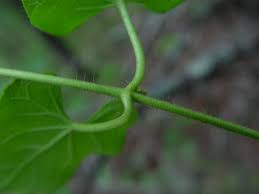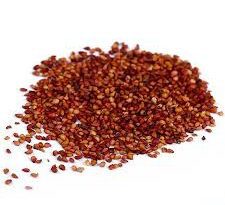The Blueberry Branches: Economic Importance, Uses, and By-Products
Blueberry branches are the woody extensions that grow from the main stems of the blueberry plant (Vaccinium spp.). These branches play several crucial roles in the growth, development, and fruit production of the blueberry plant.
One of the primary functions of blueberry branches is to increase the plant’s overall size and canopy. As the blueberry plant grows, it produces lateral branches that extend outward from the main stems, creating a bushy and expansive growth habit. These branches support the plant’s foliage, allowing it to capture sunlight for photosynthesis and promote healthy growth.
In addition to providing structural support, blueberry branches serve as sites for flower and fruit production. Flower buds develop along the branches, typically forming clusters at the tips of the stems. These buds give rise to the blueberry plant’s characteristic white or pink flowers in spring, which eventually develop into fruit as the flowers are pollinated.
Blueberry branches also play a role in the distribution of water, minerals, and nutrients throughout the plant. Vascular tissue, including xylem and phloem, runs through the branches, connecting the roots to the leaves and other above-ground parts of the plant.
This vascular system facilitates the movement of water and nutrients from the roots to the rest of the plant and the translocation of sugars produced during photosynthesis to support growth and fruit development.
Furthermore, blueberry branches can vary in size, shape, and growth habit depending on factors such as the age of the plant, variety, and growing conditions. Pruning and training techniques are commonly used in blueberry cultivation to manage branch growth, improve air circulation, and optimize fruit production.
Overall, blueberry branches are essential components of the blueberry plant, contributing to its growth, development, and fruiting. Understanding the characteristics and management of blueberry branches is crucial for successful blueberry cultivation and production.
The Economic Importance and Uses of Blueberry Branches

1. Horticulture: Blueberry branches are essential in the horticultural industry for propagation. Healthy branches are used to grow new blueberry plants, contributing to the expansion of blueberry cultivation and the agricultural sector.
2. Landscaping: Blueberry branches are valued in landscaping for their aesthetic appeal. They can be used in garden designs, borders, and hedges to add texture and visual interest to outdoor spaces, enhancing property value and curb appeal.
3. Soil Erosion Control: Blueberry branches play a role in soil erosion control measures. When planted along slopes and riverbanks, their root systems help stabilize soil, preventing erosion and protecting natural landscapes.
4. Biomass Production: Blueberry branches can be harvested and processed for biomass production. They serve as a renewable source of organic material used for energy generation through combustion or conversion into biofuels, supporting sustainable energy initiatives.
5. Crafts and Art Supplies: Blueberry branches are popular among crafters and artists. They can be dried, sculpted, and painted to create decorative items, sculptures, and artworks, contributing to the creative industry and artisanal markets.
6. Floral Arrangements: Blueberry branches are sought after in floristry for their delicate foliage and graceful form. They are used in floral arrangements for weddings, events, and home décor, adding a touch of natural beauty and elegance to floral designs.
7. Wildlife Habitat: Blueberry branches provide habitat and food sources for wildlife. Birds, insects, and small mammals utilize blueberry branches for nesting, shelter, and foraging, supporting biodiversity in natural ecosystems.
8. Environmental Restoration: Blueberry branches are utilized in environmental restoration projects. They are planted in degraded areas to rehabilitate ecosystems, enhance biodiversity, and promote ecological resilience.
9. Traditional Crafts: Blueberry branches have cultural significance in traditional crafts. Indigenous communities use them in basket weaving, ceremonial items, and traditional artwork, preserving cultural heritage and craftsmanship.
10. Soil Improvement: Blueberry branches contribute to soil health. As they decompose, they enrich the soil with organic matter, improving its structure, fertility, and moisture retention capacity, benefiting agriculture and gardening.
11. Livestock Bedding: Blueberry branches are used as bedding material for livestock. They provide a comfortable and absorbent surface for animals, supporting animal welfare practices in agriculture.
12. Natural Fencing: Blueberry branches are utilized for constructing natural fences and barriers. They provide a sustainable and aesthetically pleasing alternative to traditional fencing materials, enhancing landscape aesthetics and biodiversity.
13. Educational Resources: Blueberry branches serve as educational resources in schools and nature centers. They provide hands-on learning opportunities for students to study plant anatomy, ecology, and environmental science.
14. Soil Erosion Barriers: Blueberry branches are employed as erosion barriers in agricultural fields. They help reduce soil erosion by slowing down water runoff and trapping sediment, preserving fertile topsoil.
15. Recreational Activities: Blueberry branches contribute to recreational activities such as hiking and nature walks. They provide habitat and food sources for wildlife, enhancing outdoor experiences for nature enthusiasts.
16. Aquatic Habitat Restoration: Blueberry branches are utilized in aquatic habitat restoration projects. They are planted along shorelines and riverbanks to stabilize soil, prevent erosion, and create habitat for aquatic organisms.
17. Herbal Remedies: Blueberry branches have historical significance in herbal medicine. Extracts from blueberry branches are used in traditional remedies for their purported health benefits, contributing to alternative medicine practices.
Read Also: Mealybug: The Silent Garden Threat – How to Defend Your Plants
The Products and By-products That Can Be Derived From Blueberry Branches

1. Mulch: Blueberry branches can be chipped or shredded to produce mulch. Blueberry branch mulch is spread over garden beds to retain moisture, suppress weeds, and improve soil health.
2. Biomass Fuel: Blueberry branches are harvested and processed to produce biomass fuel. They can be burned directly or converted into pellets or briquettes for use in heating systems and power generation.
3. Crafts and Artwork: Blueberry branches are popular among artists and crafters. They can be carved, painted, or woven into decorative items, sculptures, and artwork, adding a natural and rustic touch to creations.
4. Animal Bedding: Blueberry branches are used as bedding material for livestock. They provide a comfortable and absorbent surface for animals to rest and nest, contributing to animal welfare in agriculture.
5. Garden Structures: Blueberry branches can be used to construct garden structures such as trellises, arbors, and supports. They provide a natural and eco-friendly alternative to synthetic materials, adding charm and character to outdoor spaces.
6. Floral Arrangements: Blueberry branches are valued in floristry for their delicate foliage and vibrant colors. They are used in floral arrangements for weddings, events, and decorative purposes, adding texture and interest to floral designs.
7. Natural Fencing: Blueberry branches are utilized for constructing natural fences and barriers. They provide a sustainable and aesthetically pleasing alternative to traditional fencing materials, enhancing landscape aesthetics and biodiversity.
8. Soil Erosion Control: Blueberry branches are employed in soil erosion control measures. They are planted along slopes, riverbanks, and erosion-prone areas to stabilize soil, prevent erosion, and preserve natural landscapes.
9. Garden Path Edging: Blueberry branches can be used as edging for garden paths and walkways. They define borders, add visual interest, and help prevent soil erosion along pathways, enhancing garden aesthetics.
10. Wildlife Habitat: Blueberry branches provide habitat and food sources for wildlife. Birds, insects, and small mammals utilize blueberry branches for nesting, shelter, and foraging, supporting biodiversity in natural ecosystems.
Read Also: 7 Medicinal Health Benefits Of Ribes divaricatum (Straggly Gooseberry)
Frequently Asked Questions (FAQ’s) About Blueberry Branches

1. Can blueberry branches be used as mulch in gardens?
Yes, blueberry branches can be chipped or shredded to produce mulch, which is beneficial for retaining moisture, suppressing weeds, and improving soil health in garden beds.
2. Are blueberry branches suitable for constructing garden structures?
Blueberry branches can be used to construct garden structures such as trellises, arbors, and supports. They provide a natural and eco-friendly alternative to synthetic materials, adding charm and character to outdoor spaces.
3. Can blueberry branches be used as animal bedding?
Yes, blueberry branches are commonly used as bedding material for livestock. They provide a comfortable and absorbent surface for animals to rest and nest, contributing to animal welfare in agriculture.
4. Are blueberry branches biodegradable?
Yes, blueberry branches are biodegradable. When left to decompose, they enrich the soil with organic matter, improving its structure, fertility, and moisture retention capacity.
5. Can blueberry branches be used for erosion control?
Yes, blueberry branches are employed in soil erosion control measures. They are planted along slopes, riverbanks, and erosion-prone areas to stabilize soil, prevent erosion, and preserve natural landscapes.
6. Do blueberry branches attract wildlife?
Yes, blueberry branches provide habitat and food sources for wildlife. Birds, insects, and small mammals utilize blueberry branches for nesting, shelter, and foraging, supporting biodiversity in natural ecosystems.
7. How long do blueberry branches last as garden edging?
The lifespan of blueberry branches as garden edging depends on factors such as environmental conditions and maintenance practices. With proper care, they can last several years before needing replacement.
8. Are blueberry branches suitable for floral arrangements?
Yes, blueberry branches are valued in floristry for their delicate foliage and vibrant colors. They are used in floral arrangements for weddings, events, and decorative purposes, adding texture and interest to floral designs.
9. Can blueberry branches be used for craft and artwork?
Yes, blueberry branches are popular among artists and crafters. They can be carved, painted, or woven into decorative items, sculptures, and artwork, adding a natural and rustic touch to creations.
10. Are blueberry branches invasive in garden settings?
Blueberry branches are not considered invasive in garden settings. However, they should be managed properly to prevent overcrowding and maintain desired plant arrangements.
Read Also: Effects of Pollution on Fish, Algae, Zooplankton, Benthic Organisms, and Water Quality









